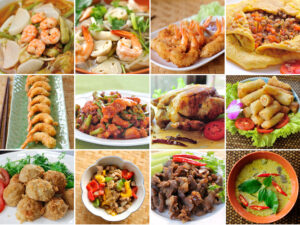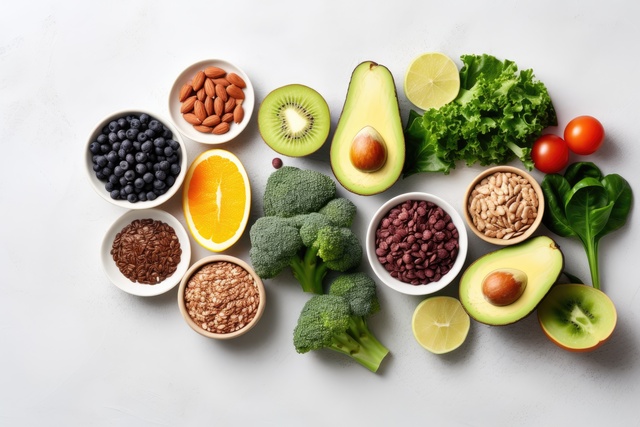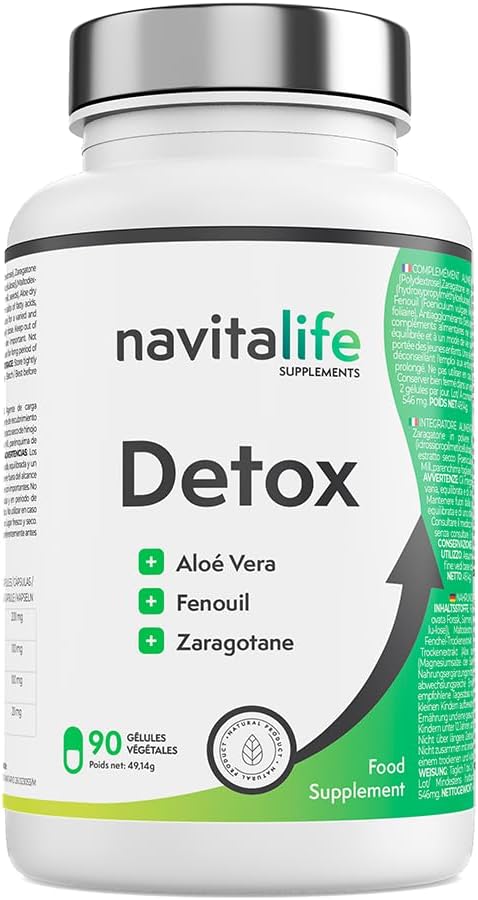Table of Contents
ToggleIntroduction
Diving into the rich tapestry of global cuisine reveals a dazzling array of vibrant, nutrient-packed foods that nourish our bodies and delight our senses.
From the bold reds of peppers in Mexican dishes to the lush greens of leafy vegetables in Asian fare, each color represents a unique spectrum of vitamins, minerals, and antioxidants essential for optimal health.
In this article, we’ll delve into the nutritional bounty offered by Diverse Food Cultures and how embracing a rainbow of foods can enhance our well-being.
The Nutritional Value of Colors in Diverse Food Cultures

A varied and colorful diet is key to ensuring we receive a wide range of essential nutrients. The hues present in fruits and vegetables signal the presence of various vitamins, minerals, and antioxidants crucial for maintaining our health.
The Red Palette: Tomatoes, Strawberries, and Beets
Beets not only add a vibrant touch to dishes but also boast a wealth of essential nutrients like folate, potassium, and vitamin C.
Their anti-inflammatory properties contribute to lowering blood pressure and supporting overall cardiovascular health.
Tomatoes and strawberries, also part of the red spectrum, are packed with antioxidants such as lycopene and vitamin C.
These nutrients play vital roles in promoting healthy skin, bolstering the immune system, and combating chronic diseases.
The Green Spectrum: Spinach, Broccoli, and Kiwi
Green-hued foods like spinach, broccoli, and kiwi offer a powerhouse of nutrients including vitamin K, vitamin C, and fiber.
These greens are essential for maintaining strong bones, supporting digestion, and improving heart health.
Spinach, abundant in iron, aids in preventing anemia, while broccoli contains sulforaphane, known for its anti-cancer properties. Kiwi, rich in vitamin C, boosts immunity and promotes radiant skin.
Diverse Food Cultures Reality

While our world is brimming with diversity, our shared love for food unites us across cultures. Diverse Food Cultures reflects a tapestry woven with traditions, flavors, and ingredients unique to each region.
Exploring the culinary treasures of different cultures not only tantalizes our taste buds but also fosters a deeper appreciation for our interconnectedness as human beings.
Traditional Diets Around the World
Cultural traditions significantly shape dietary habits worldwide. From the Mediterranean diet’s emphasis on olive oil, vegetables, and seafood to the spice-infused marvels of Indian cuisine, each traditional diet offers a cornucopia of nutrients and health benefits.
In Japan, a diet centered around fresh fish, tofu, and fermented foods exemplifies not only delicious cuisine but also a pathway to longevity and well-being.
Beyond ingredients, cultural dietary traditions encompass meal preparation and communal dining experiences. Many cultures cherish mealtime as a communal ritual, where loved ones gather to share not just food but also stories and laughter.
This sense of unity adds depth to Diverse Food Cultures experiences, celebrating cultural heritage and fostering connections.
Fusion Foods and Modern Eating Habits
In our increasingly interconnected world, modern eating habits embrace fusion cuisine, blending traditional flavors with contemporary flair.
Fusion dishes marry diverse ingredients and cooking styles to create innovative culinary delights that transcend borders.
Whether it’s Korean-inspired tacos, sushi-infused burritos, or curry-laced pizzas, fusion cuisine celebrates diversity while bringing people together through shared Diverse Food Cultures adventures.
Fusion cuisine not only celebrates cultural diversity but also showcases the creativity of chefs who push the boundaries of traditional cooking.
By melding culinary traditions, fusion foods expand our gastronomic horizons and invigorate our palates with a symphony of flavors.
Benefits of a Colorful Diet
Despite our myriad food choices, many of us may fall short of receiving the full spectrum of nutrients our bodies crave.
A colorful diet, teeming with a variety of fruits, vegetables, grains, and proteins, offers a plethora of benefits that support overall health and well-being.
Nutrient-Rich Diets

Diverse diets bursting with color provide a broad array of essential vitamins and minerals vital for various bodily functions.
Fruits and vegetables of different hues signify distinct nutrients – from the beta-carotene and vitamin C in orange and yellow produce to the iron and calcium abundant in leafy greens.
By embracing a colorful palette of foods, we ensure we don’t miss out on critical nutrients necessary for energy production, immune function, bone health, and more.
Incorporating a variety of colorful foods into our meals optimizes nutrient intake and empowers our bodies to thrive.
Promoting Preventive Health
Thoughtful dietary choices can reduce the risk of chronic diseases and promote overall wellness. A colorful diet rich in diverse, Diverse Food Cultures helps stave off deficiencies and fortify our bodies against potential health issues.
By savoring foods from across the color spectrum, we safeguard our health and vitality for the long haul.
Health experts advocate for a minimum of five servings of fruits and vegetables daily, with an emphasis on consuming a rainbow of colors. By paying heed to the hues on our plates, we nourish our bodies and shield them from future health concerns.
Challenges and Considerations
Access to Diverse Food Options
Access to a varied diet is contingent upon food availability, influenced by socioeconomic factors, geographic location, and cultural norms.
Limited access to fresh produce and specialty foods can impede individuals from enjoying the nutritional benefits of diverse diets.
In communities lacking diverse food options, reliance on processed foods may prevail, posing nutritional challenges for this Diverse Food Cultures.
Balancing Diet and Cultural Preferences
Striking a balance between dietary diversity and cultural traditions can pose challenges. While diversity enriches our diets, cultural preferences and dietary restrictions may influence food choices.
Negotiating this intersection requires awareness, education, and perhaps adaptations to traditional recipes to harmonize cultural authenticity with nutritional diversity.
Conclusion
Embracing the nutritional diversity of global cuisine by eating the rainbow of foods from various cultures is essential for optimal health.
Fruits and vegetables of different colors furnish a wealth of vitamins, minerals, and antioxidants vital for our well-being.
By incorporating a colorful array of foods from Diverse Food Cultures into our diets, we ensure we receive a broad spectrum of nutrients essential for vitality and longevity.
FAQ
Q1: Why is it important to consume a diverse range of foods from different cultures?
Eating foods from diverse cultures ensures a varied nutrient intake crucial for overall health and well-being. Each culture’s culinary heritage offers unique ingredients, flavors, and nutrients that enrich our diets.
Q2: What are the benefits of consuming a rainbow of fruits and vegetables?
A colorful array of fruits and vegetables provides a broad spectrum of vitamins, minerals, and phytonutrients essential for optimal health. Each color group offers distinct health benefits, contributing to overall well-being.
Q3: How can you incorporate Diverse Food Cultures into your meal planning?
Explore recipes from Diverse Food Cultures, visit ethnic markets for unique ingredients, and experiment with different cooking techniques. By embracing diverse culinary traditions, you can infuse excitement and nutritional variety into your meals.
Q4: Are there challenges to eating a diverse range of foods from different cultures?
Challenges such as unfamiliarity with ingredients and balancing cultural preferences may arise. However, with curiosity, education, and adaptability, you can overcome these obstacles and enjoy the nutritional bounty of Diverse Food Cultures.








Wow, marvelous weblog layout! How lengthy have you ever been running a blog for?
you made blogging look easy. The full glance of your site is wonderful, let alone the content
material! You can see similar here e-commerce